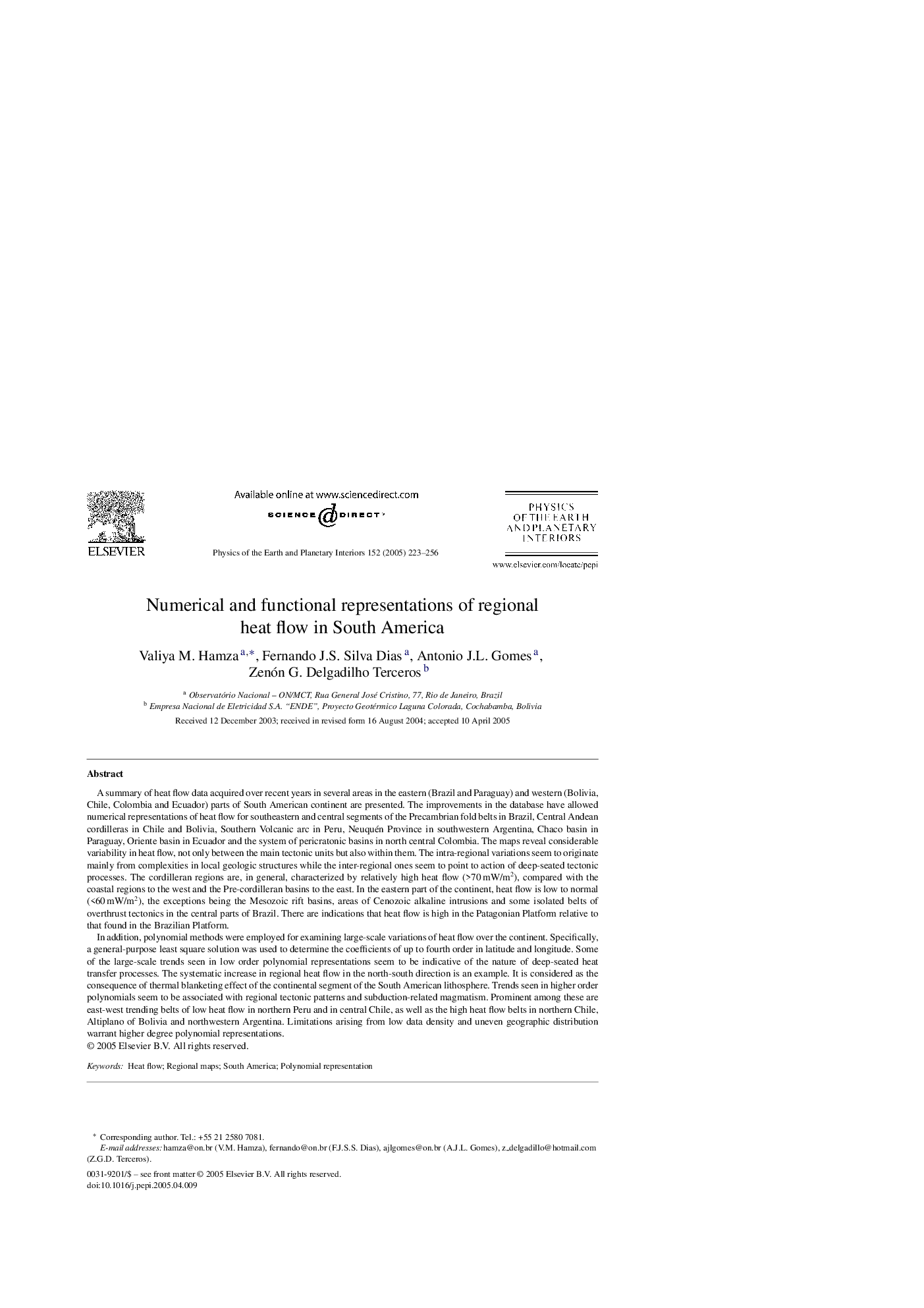| Article ID | Journal | Published Year | Pages | File Type |
|---|---|---|---|---|
| 10121263 | Physics of the Earth and Planetary Interiors | 2005 | 34 Pages |
Abstract
In addition, polynomial methods were employed for examining large-scale variations of heat flow over the continent. Specifically, a general-purpose least square solution was used to determine the coefficients of up to fourth order in latitude and longitude. Some of the large-scale trends seen in low order polynomial representations seem to be indicative of the nature of deep-seated heat transfer processes. The systematic increase in regional heat flow in the north-south direction is an example. It is considered as the consequence of thermal blanketing effect of the continental segment of the South American lithosphere. Trends seen in higher order polynomials seem to be associated with regional tectonic patterns and subduction-related magmatism. Prominent among these are east-west trending belts of low heat flow in northern Peru and in central Chile, as well as the high heat flow belts in northern Chile, Altiplano of Bolivia and northwestern Argentina. Limitations arising from low data density and uneven geographic distribution warrant higher degree polynomial representations.
Related Topics
Physical Sciences and Engineering
Earth and Planetary Sciences
Geophysics
Authors
Valiya M. Hamza, Fernando J.S. Silva Dias, Antonio J.L. Gomes, Zenón G. Delgadilho Terceros,
